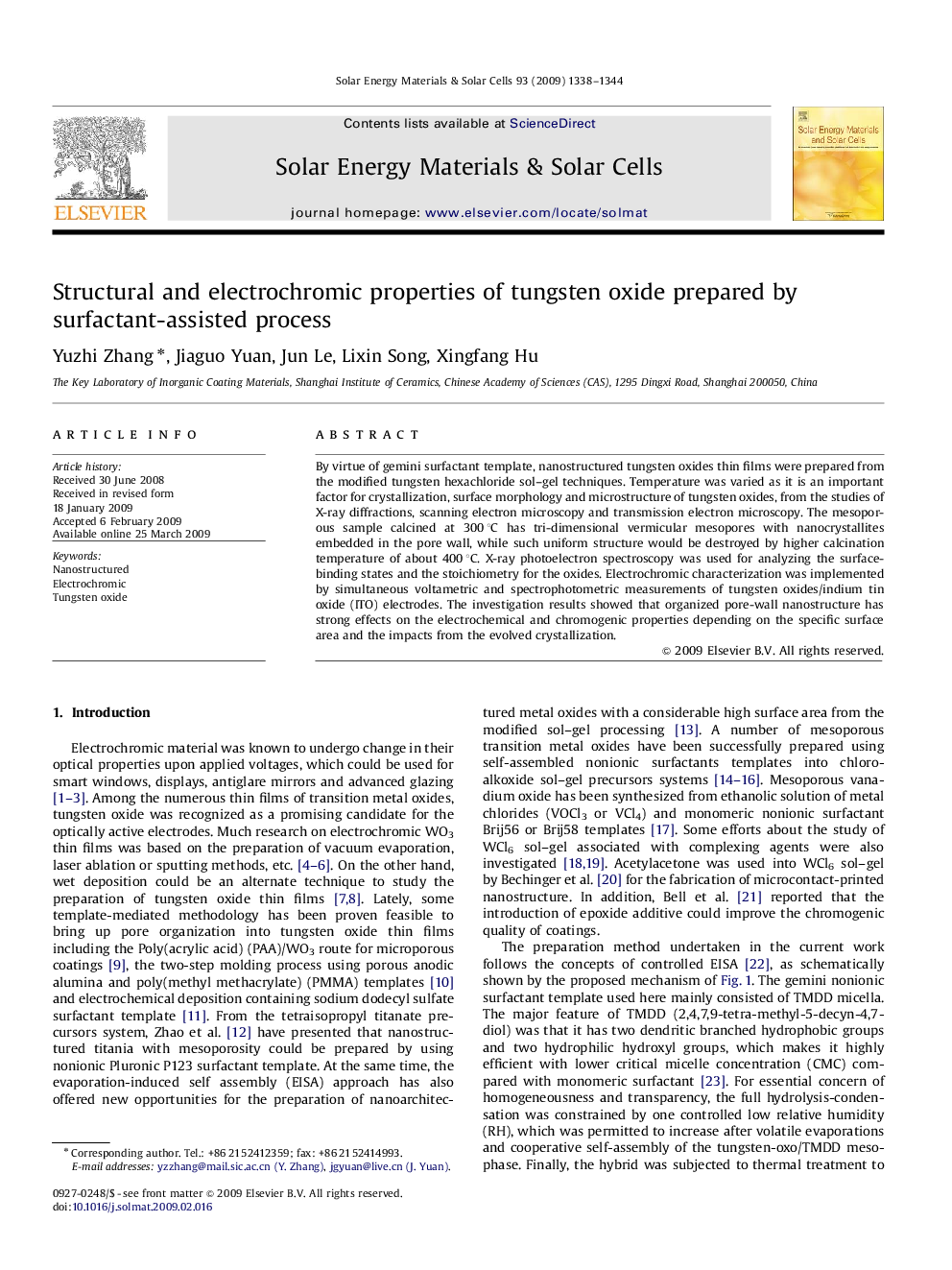| Article ID | Journal | Published Year | Pages | File Type |
|---|---|---|---|---|
| 80471 | Solar Energy Materials and Solar Cells | 2009 | 7 Pages |
By virtue of gemini surfactant template, nanostructured tungsten oxides thin films were prepared from the modified tungsten hexachloride sol–gel techniques. Temperature was varied as it is an important factor for crystallization, surface morphology and microstructure of tungsten oxides, from the studies of X-ray diffractions, scanning electron microscopy and transmission electron microscopy. The mesoporous sample calcined at 300 °C has tri-dimensional vermicular mesopores with nanocrystallites embedded in the pore wall, while such uniform structure would be destroyed by higher calcination temperature of about 400 °C. X-ray photoelectron spectroscopy was used for analyzing the surface-binding states and the stoichiometry for the oxides. Electrochromic characterization was implemented by simultaneous voltametric and spectrophotometric measurements of tungsten oxides/indium tin oxide (ITO) electrodes. The investigation results showed that organized pore-wall nanostructure has strong effects on the electrochemical and chromogenic properties depending on the specific surface area and the impacts from the evolved crystallization.
